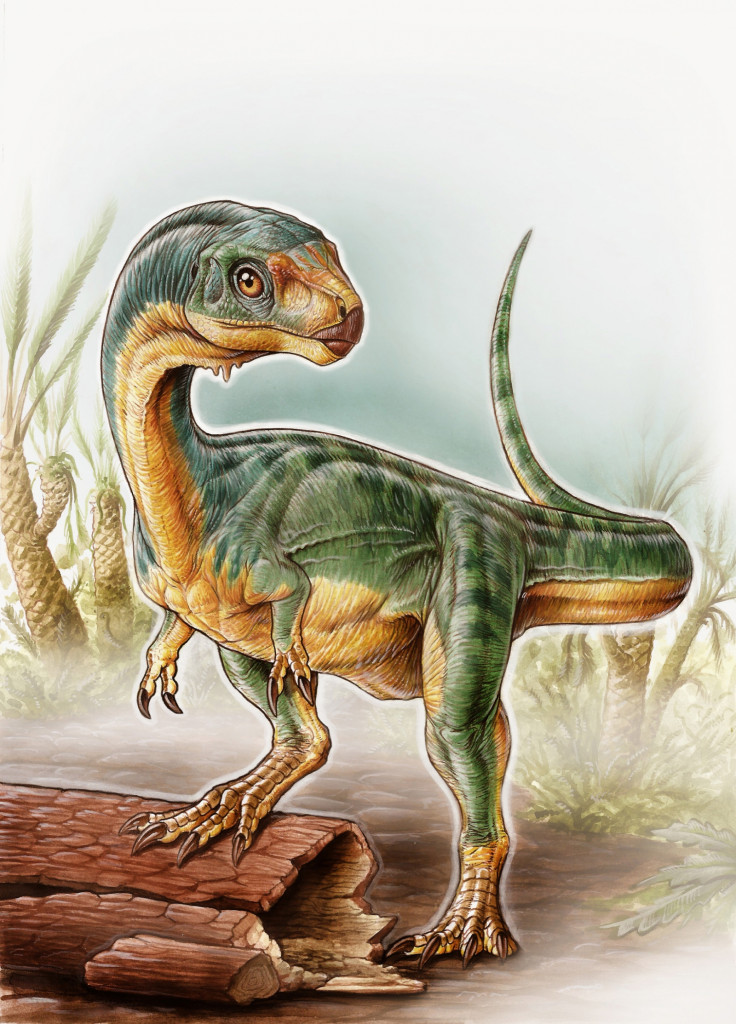Bizarre 'Frankenstein' chilesaurus is the missing link on dinosaur family tree
Chilesaurus has baffled scientists since its discovery in 2015.

A strange dinosaur which has puzzled scientists for the last two years may be the 'missing link' between plant-eating dinosaurs and theropods - a group that includes the fearsome T-rex.
The fossil of the dinosaur, known as Chilesaurus, was discovered in Southern Chile and first described in 2015. Thought to have lived 150 million years ago during the Late Jurassic Period, the dinosaur has been hard to classify, with anatomical features that could link it to different groups of dinosaurs.
"Chilesaurus is a very unusual species, it looks like different part from its body come from different dinosaur groups. If you were to show one bone to a paleoontologist he would classify them as part of one group. Show him another bone, he'll place it into another," Matthew Baron from Cambridge's Department of Earth Sciences told IBTimes UK.
"Chilesaurus has long baffled scientists because it looks like it has been stitched together from different animals, it's a sort of Frankenstein dinosaur that just didn't seem to fit in the family tree of dinosaurs."
In a study now published in Biology Letters, Baron and colleagues from the Natural History Museum have tried to settle the debate of which group the creature belongs to. Earlier research suggested that it was most likely a theropod like Tyrannosaurus, but they find here that this was not the case.
Dinosaur family tree
Using a comprehensive dataset to analyse more than 450 anatomical characteristics of early dinosaurs, they were able to place the creature in the dinosaur family tree.
"Reconstructing the dinosaur family tree is no easy feat because the fossil record is far from perfect. Our study was made possible after we worked on assembling one of the largest, most holistic early dinosaur data sets. This allowed us to compare the anatomical features of this dinosaur to that of other dinosaurs more easily," Baron explained.
Their analyses suggest that Chilesaurus was probably a very early member of a completely different group - a 'bird-hipped' group called Ornithischia.

The dinosaurs in these groups have several common physical traits. In particular, they have an inverted, bird-like hips and a beak-like structure for eating. The inverted hips allowed for bigger, more complex digestive systems, which in turn allowed for larger plant-eaters to evolve.
Chilesaurus does have the same bird-like hip structure, but not the distinctive 'beak' structure. As such, it fills the gap between Ornithischia dinosaurs and theropods - it is the 'missing link' between these two major groups of dinosaurs.
"There was a split in the dinosaur family tree, and the two branches took different evolutionary directions," Baron added. "This seems to have happened because of change in diet for Chilesaurus. It seems it became more advantageous for some of the meat eating dinosaurs to start eating plants, possibly even out of necessity."
This study, just like another published earlier this year by the same group of scientists, highlights the need to rethink the evolutionary history of dinosaurs and to rearrange, re-define and re-name the different dinosaur groups.
© Copyright IBTimes 2025. All rights reserved.






















